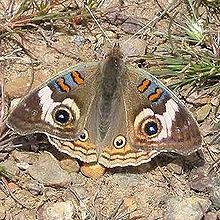Animals
Animals are heterotrophic eukaryotic organisms which ingest food. They are distinguished from fungi which absorb food. Heterotrophs obtain energy by catabolising organic matter biosynthesised by other organisms. They are distinguished from autotrophs (plants and chromista) which obtain metabolic energy from inorganic sources. Eukaryotic organisms are composed of nucleated cells. They are distinguished from prokaryotic organisms (eubacteria and archea) which are composed of non-nucleated cells.
Choanozoa are single celled animals. Metazoa are multicellular animals. Holozoa are animals which are either single celled or multicellular. Although amoebas and paramecia are motile and heterotrophic, they are not animals. Fungi are more closely related to animals than amoebas and paramecia are more closely related to plants than to animals.

Many animals, including humans, exhibit a bilateral symmetry. Bilateral animals have left and right halves which are mirror images of each other. Before the emergence of bilateral animals, sponges, ctenophorans, cnidarians, and placozoans split from the main animal lineage, but order of divergence is less than certain. Bilaterian animals consist of three clades: deuterostomia, lophotrochozoa, and ecdysozoa.[1][2]
